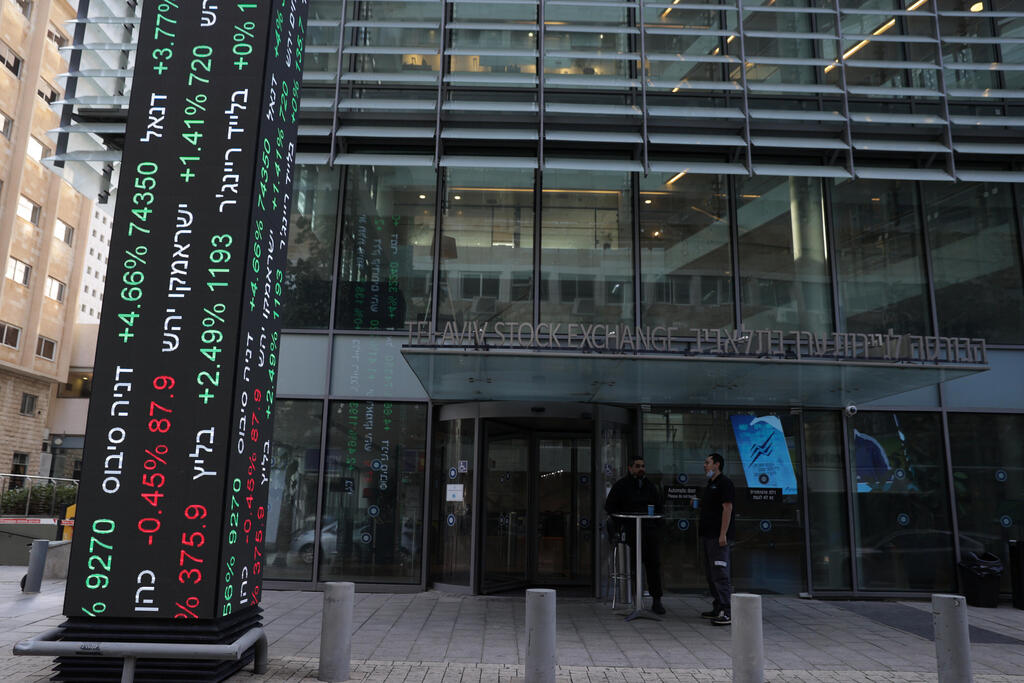We were all hoping for world peace, but we’ll have to settle for a typo: Last Thursday (June 5), around midday, traders on the Tel Aviv Stock Exchange watched in shock as Elbit Systems — one of Israel’s largest defense companies — suddenly plummeted 33% in value.
Normally, such a collapse would suggest something monumental: perhaps the end of the Russia-Ukraine war, a sudden ceasefire between Israel and Hamas and a broader global diplomatic thaw, all happening at once. But instead, the cause was far more mundane: one trader made a costly typo, and then failed to correct it for nearly six minutes.
In the end, no geopolitical breakthroughs materialized — only a faulty trade. The massive sell order, mistakenly offering 66,000 shares at an extremely low price, triggered the exchange’s volatility control mechanisms, designed to prevent disastrous consequences from trading errors.
The trader had ample time — nearly six minutes — to cancel the order but chose not to. As a result, a significant transaction went through: about $17.3 million worth of shares exchanged hands, with the stock down 33%. Eventually, this particular transaction was reversed, limiting the trader’s losses and the stock price bounced back to its original level.
Every trading day opens and closes with auctions, while continuous trading fills the hours in between. Investors submit buy and sell orders at different prices, and trades occur when those prices match.
For example, if a seller offers 8 shares at $1,000 apiece, and a buyer submits an order for 5 shares at that price, the buyer pays about $1,350 for 5 shares, and 3 shares remain listed for sale.
Investors can either submit immediate buy orders at the listed sell price or post lower bids that remain open, executing only if matching sell orders appear later.
Most trading sessions proceed smoothly. But occasionally, a trader accidentally places a massive buy or sell order at a wildly incorrect price, causing dramatic price swings and potentially massive personal losses. To minimize such risks, the exchange employs two safeguards: a volatility moderation mechanism and the option to request trade cancellations.
The exchange halts continuous trading if a stock moves sharply, either relative to its previous closing price (static fluctuation) or its most recent trade (dynamic fluctuation).
Trigger thresholds vary by index. For TA-35 stocks, static moves of 7% or dynamic shifts of 4% halt trading. TA-90 stocks trigger at 8% static or 4% dynamic. SME60 and growth indices trigger at 9% static or 5% dynamic. Once triggered, a new 5–6 minute auction begins.
If genuine buying or selling interest persists after the swing, trading resumes around fair market value. But if the swing results from an input error, the trader can cancel the mistake during the new auction, containing their losses to only the trades executed before the halt.
The second safeguard allows traders to request cancellations if three conditions are met: the stock’s price moved at least 6% dynamically for TA-35 stocks, or 12% for others; the trader’s total loss exceeds about $13,500; and the error is reported within 20 minutes of the trade.
Trades meeting these criteria are classified as erroneous and typically reversed. The penalty is about $2,700 plus VAT. The exchange may, at its discretion, approve cancellation requests that narrowly miss these thresholds, though it generally avoids overturning trades that don’t fully qualify.
In 2022, the exchange’s board approved some technical changes to the definition of an erroneous trade. However, these have yet to be cleared by the Securities Authority. Notably, the cancellation thresholds are stricter than the volatility moderation triggers, so actual cancellations remain relatively rare in regular stock trading, more common in derivatives or securities misalignments.
In this case, the trader submitted a sell order priced over 90% below market — a sale worth about $27 million at the going rate. At the time, roughly 2,000 buy orders existed at prices reflecting slight discounts of 0.1% to 4% below market.
All those buy orders were immediately filled at their respective prices against the mistaken sale. When the price fell beyond 4%, volatility moderation kicked in, preventing even steeper trades. Still, 64,000 shares remained for sale in the renewed auction. The trader, for unknown reasons, failed to cancel during this window.
Get the Ynetnews app on your smartphone: Google Play: https://bit.ly/4eJ37pE | Apple App Store: https://bit.ly/3ZL7iNv
As a result, heavy buy demand absorbed the shares at prices reflecting a 33% drop, producing a transaction that would have cost the trader about $8.6 million. After the deal was executed, the trader quickly appealed for cancellation.
The exchange did not reverse the earlier trades executed before volatility moderation, since the price drop was under 6%, leaving the trader with a loss of approximately $13,500 to $16,200. However, the massive 33% drop transaction was canceled. In the end, the trader paid an additional $2,700 fine for the cancellation — a fee that could have been avoided had the order been canceled promptly during the auction.
Immediately after trading resumed, a sharp-eyed investor placed a buy order at 1,000.1 — just above the canceled price but still 33% below pre-error levels. Three separate sellers unloaded a total of 5 shares at that price, losing about $675 combined. These small trades weren't canceled. They likely stemmed from automatic triggers such as stop-loss or conditional sell orders.
The stock quickly rebounded, triggering another volatility halt as prices climbed back to pre-error levels.
The brief plunge even impacted TA-35 index options and ETFs holding Elbit Systems, dragging the index down by about 2%. Professional options traders likely recognized the glitch and disregarded the temporary dip. Less experienced ETF investors, however, may have been misled into panic-selling at temporarily depressed prices. It’s unclear whether the event ultimately caused significant losses in index derivatives or funds.
Investors should always pause when witnessing sharp, instantaneous price swings. These can often result from isolated errors, with trades later canceled. Before reacting, it's crucial to verify whether multiple trades or significant news justify the movement or whether it’s the result of a single erroneous order.
Additionally, anyone who happens to buy shares in such mistaken trades should avoid immediately selling them. If the trade is later canceled, they’ll end up with a negative balance, forcing them to repurchase shares to close their position. In simple terms: if a profit seems too good to be true — likely created at the expense of another trader’s costly mistake — it may not be real, and should not be cashed out too quickly.




